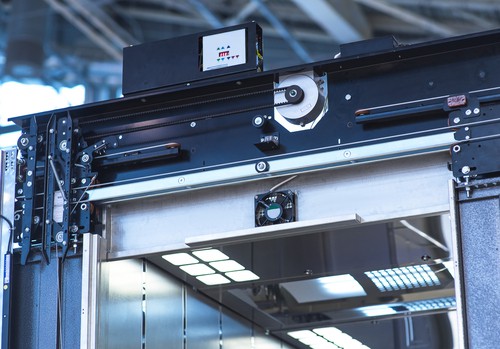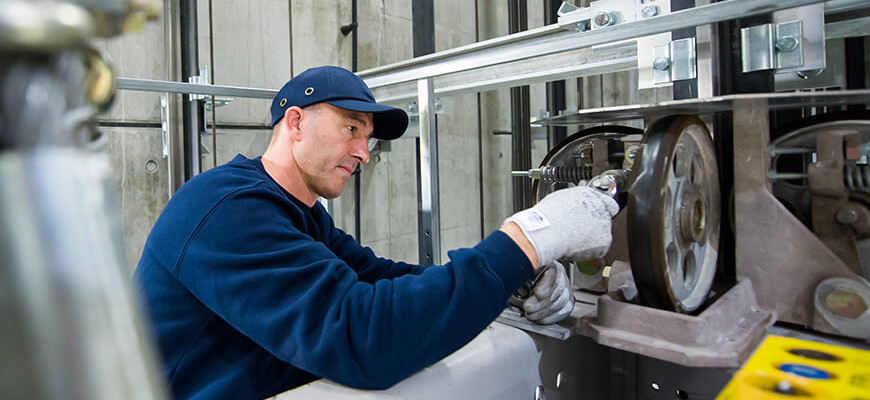Essential Guide to Understanding Handicapped Platform Lifts and Their Functionality
Comprehending the details of disabled platform raises goes beyond simple understanding; it calls for an extensive grasp of their capability and layout. From the different kinds available to the important parts that make them operational, each element adds to the seamless operation of these important availability tools. In addition, the rigid security regulations and upkeep considerations linked with system lifts are vital in guaranteeing their reliability and long life. By discovering these aspects thoroughly, one can acquire a profound understanding of how these lifts not just enhance access but additionally focus on user safety and security and convenience.
Kinds Of Impaired System Lifts
There are numerous types of impaired platform raises created to give availability for individuals with movement challenges. Inclined platform lifts, on the various other hand, are suitable for locations where an upright lift might not be possible due to architectural restraints.
Another type of disabled system lift is the portable lift, which offers versatility and benefit. Each kind of impaired system lift serves an one-of-a-kind purpose in improving ease of access and boosting the quality of life for people with wheelchair obstacles.
Key Elements and Mechanisms
Impaired system lifts, such as vertical and likely lifts, rely on certain essential elements and devices to make sure smooth and secure transportation for people with mobility challenges. One necessary component of these lifts is the system itself, which works as the structure for transferring people - lift servicing near me. The system is made to be durable, large enough to fit wheelchairs or wheelchair tools, and outfitted with security attributes such as guardrails and non-slip surface areas to avoid crashes during transportation

In addition, safety sensors and emergency quit switches are incorporated into handicapped platform lifts to boost individual security and protect against mishaps. These parts collaborate to create a trustworthy and reliable transportation service for individuals with mobility disabilities.
Installation and Upkeep Factors To Consider

Routine upkeep is equally important to maintain disabled platform lifts running smoothly. Scheduled assessments, lubrication of moving parts, and screening of safety and security attributes must be brought out according to the producer's suggested timetable. Any kind of signs of wear and tear should be attended to immediately to avoid further damage and guarantee the lift runs dependably. In addition, having a maintenance log to track service background and treatments can assist in recognizing patterns and potential concerns before they intensify. By focusing on correct installment and thorough upkeep practices, the longevity and efficiency of handicapped system lifts can be made the most of, profiting both customers and facility supervisors.
Security Attributes and Rules
Ensuring compliance with safety policies is extremely important when examining the performance of safety attributes in disabled platform lifts. These lifts go through certain safety and security criteria to secure users, making it vital for producers and drivers to adhere to these regulations. Security features frequently found in disabled system lifts consist of emergency situation quit buttons, safety obstacles, interlocks, and under-platform sensors. go Emergency situation stop buttons allow instant stopping of the lift in situation of an emergency, while safety barriers stop users from inadvertently dropping off the system. Interlocks ensure that the lift doors are securely closed prior to the lift operates, enhancing individual security. Under-platform sensors detect blockages underneath the lift, preventing it from coming down if an object remains Check Out Your URL in the method. In addition, normal maintenance and evaluations are needed to make sure that security functions are functioning correctly and in conformity with regulations. By focusing on safety and security attributes and sticking to policies, disabled system lifts can provide secure and reliable transportation for individuals with impairments.
Advantages of Using System Lifts
Conformity with security guidelines and the execution of necessary safety attributes in handicapped platform lifts contribute to the total advantages of making use of these lifts for people with handicaps. Past security, platform lifts use a range of advantages that boost availability and convenience. Overall, the benefit, freedom, and inclusivity promoted by platform raises significantly improve the quality of life for people with specials needs, making them a very useful accessibility remedy.

Conclusion
In verdict, disabled system raises come in various types with crucial elements and devices that allow for safe and effective operation. The advantages of utilizing platform lifts include increased ease of access and independence for individuals with impairments.